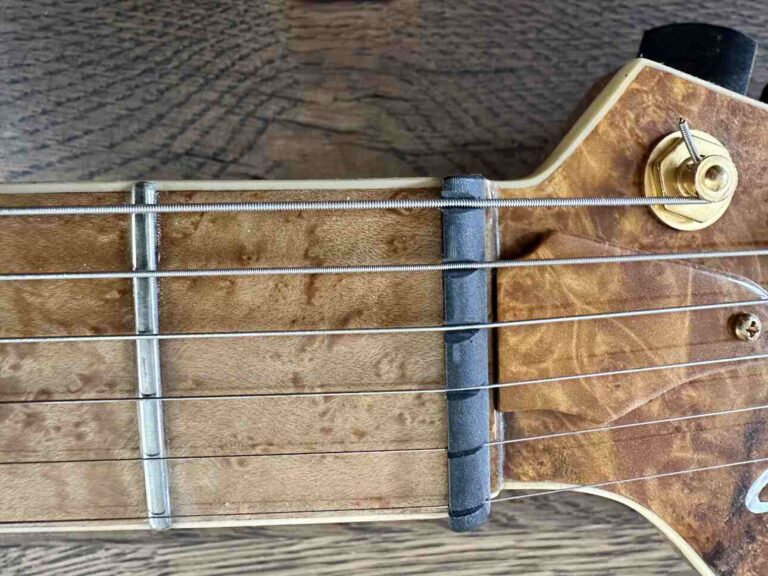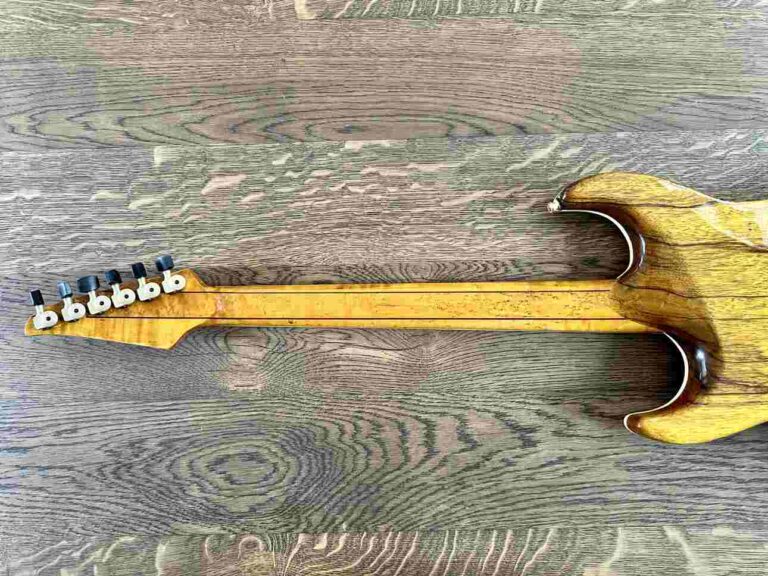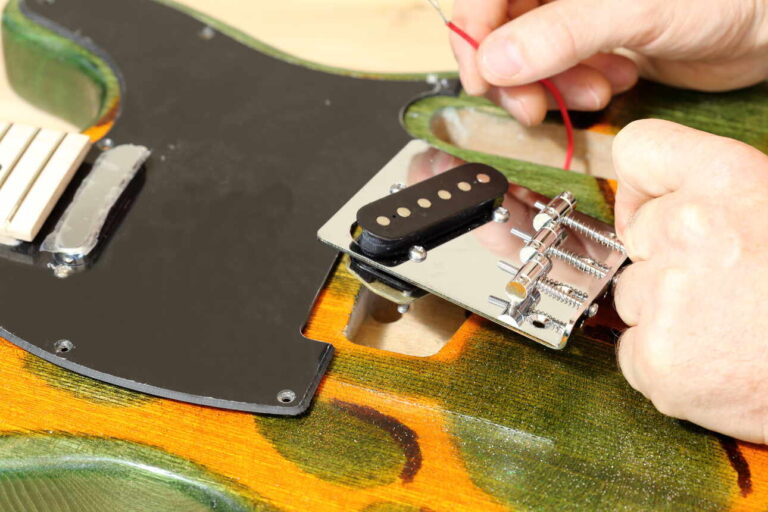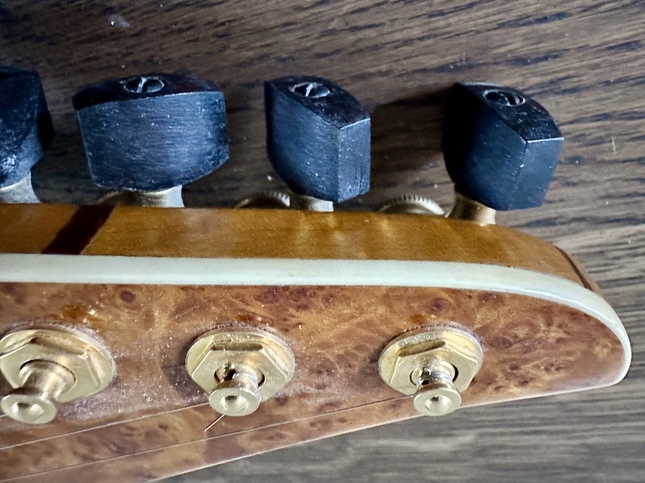Do You Need to Adjust Guitar Truss Rod When Changing String Gauge?
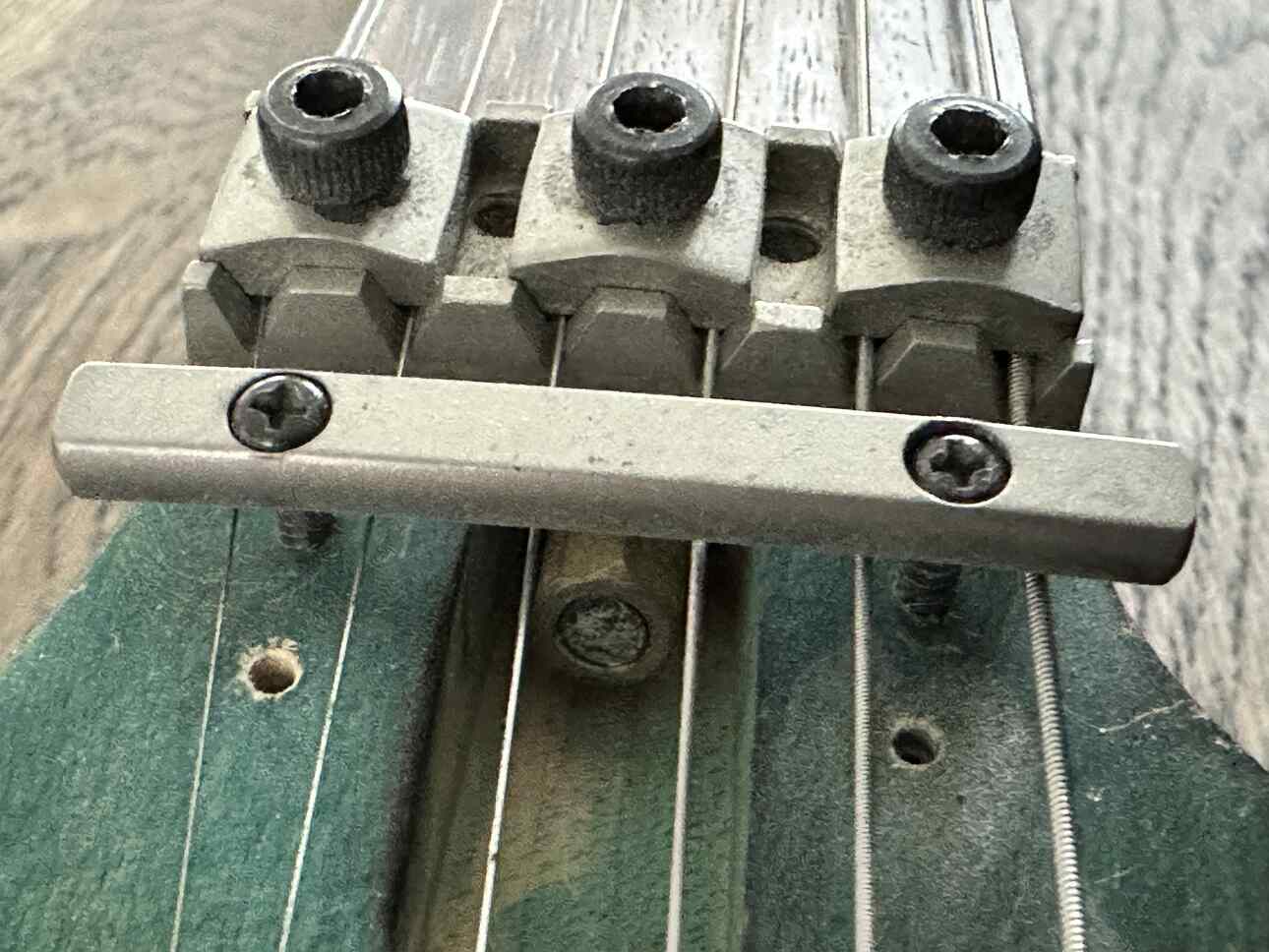
Changing guitar strings to a different gauge can affect neck tension. You may need to tweak the truss rod. This rod counters string tension and helps adjust the action and neck curve.
The impact on the truss rod varies with each guitar and string gauge change. Heavier or lighter strings mean checking if you need truss rod adjustment.
It’s not unimportant. A check and tweak keep your guitar playing smoothly and extend its life.
Nuff said, let’s have a look at the ins and outs!
Key Takeaways
- When you change the string gauge, adjusting your guitar’s truss rod might be necessary;
- Truss rods keep the neck curve and action in check;
- Assess your guitar to see if it needs a truss rod tweak.
The Effects of Changing String Gauge on Truss Rod Tension
How Different String Gauges Affect Neck Tension
Switching to a different gauge of guitar strings can alter neck tension due to changes in string tension.
With heavier gauge strings:
- Increased neck tension can occur as thicker strings apply more force;
- This may lead to a bowed guitar neck, altering the action (string height).
With lighter gauge strings:
- Neck tension can decrease since thinner strings exert less force;
- The neck might straighten, potentially reducing the action.
Changes in neck tension can affect how the guitar feels and sounds, sometimes requiring truss rod tweaks.
Consider adjusting the neck if the new strings
aren’t meeting your standards
When to Adjust the Truss Rod After Changing String Gauge
When thinking about adjusting the truss rod, consider these points:
Action changes: A truss rod tweak may improve playability if string height changes after switching string gauges;
Intonation shifts: A truss rod tweak might fix clear intonation issues, stabilizing your guitar’s tuning;
Personal preference: Your comfort in playing the guitar is crucial. Consider adjusting the neck if the new strings aren’t meeting your standards.
Understanding Truss Rods and Their Function
What Is a Truss Rod?
The truss rod is a key element in a guitar’s neck, balancing the string tension. This metal rod upholds the neck’s curve and stability, which is crucial for playability.
Tweaking the truss rod affects neck relief, which makes it important to know when and how to adjust it.
How Does Truss Rod Tweaking Impact Guitar Setup?
Changing your guitar’s string gauge alters the tension, affecting neck curvature. Heavier strings add tension; lighter ones reduce it.
This shift may lead to neck relief changes, necessitating a truss rod tweaking to keep your setup intact.
Modifying the truss rod changes neck relief: Tightening adds tension to straighten the neck while loosening reduces tension, increasing the curve.
Balancing this is vital for comfortable playing and fine-tuning intonation and action.
Effects of Changing String Gauge:
- Heavy strings:
- Increase tension;
- More likely to need a truss rod tweak.
- Light strings:
- Decrease tension;
- It may or may not need a truss rod tweaking.
Preparing to Adjust Your Truss Rod
Identify Signs That Your Guitar Needs Truss Rod Tweaking
Before tweaking the truss rod, spot the signs that your guitar’s neck might need it.
Look out for:
- Fret buzz: Buzzing across several frets often points to a neck bow or relief problem;
- Poor playability: If playing feels tough due to high or irregular string action, the truss rod might be off;
- Visible neck bow: Eyeing down the neck’s edge lets you check for too much curve. This would indicate truss rod tweaking.
Frequently Asked Questions
How do I know if my truss rod needs tweaking after a string gauge change?
After changing string gauges, check the neck relief to see if the truss rod needs tweaking. Press the first and last frets of the low E string and observe the gap at the neck’s midpoint. A gap that is too large or small, along with buzzing or playability issues, signals a need for tweaking.
What changes should I make to my guitar setup when switching from lighter to heavier strings?
Moving from lighter to heavier strings adds tension to the neck, possibly needing a truss rod tweak for correct relief. You might also need to adjust intonation and action. Heavier strings often need a higher action to prevent buzzing. Adjust gradually and test your guitar to find your preferred setup.
After changing my guitar strings to a different gauge, in which direction should I turn the truss rod for adjustment?
Post-string gauge change, adjust the truss rod based on the neck tension. For heavier strings and forward bowing, tighten the truss rod clockwise. For lighter strings and backward bowing, loosen it counterclockwise. Adjust bit by bit and reassess neck relief to prevent overdoing it and harming the neck.

